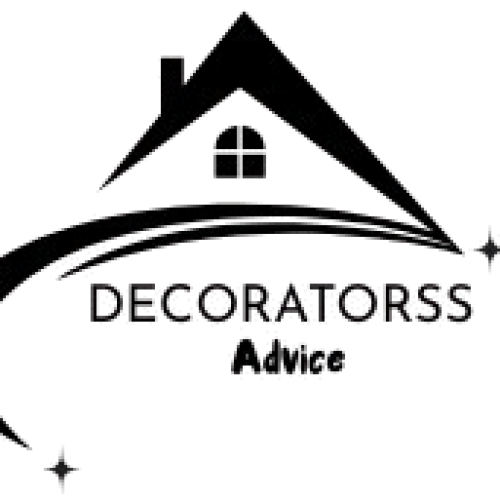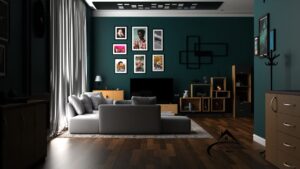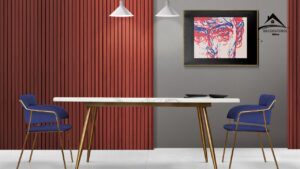Maximalist interior design is all about fearless self-expression — but even creativity needs a bit of structure. While “more is more” is the spirit of the style, too much of the wrong “more” can quickly cross the line from vibrant to visually exhausting.
If you want your maximalist home to look intentional, not chaotic, it’s important to understand what not to do. Below are the most common mistakes people make when trying to achieve this aesthetic — and how to avoid them like a pro.
1. Mistake: Mixing Everything Without a Plan
When you first fall in love with maximalist decorating, it’s tempting to throw every color, pattern, and trinket you own into one room. But true maximalism isn’t about randomness — it’s about curation with purpose.
How to fix it:
Before you start, choose a unifying theme or color palette. For example, you might focus on:
- A vintage Parisian apartment vibe with gold accents and floral prints.
- A bohemian jungle filled with plants, rattan textures, and jewel-toned fabrics.
- A modern art gallery look with bold geometric shapes and statement lighting.
Your theme will serve as a guiding thread, helping you make confident choices while keeping your space cohesive.
2. Mistake: Ignoring Balance and Scale
One of the biggest challenges in maximalist interior design is finding harmony between visual weight and breathing room. If everything is bold, nothing stands out.
How to fix it:
Mix large-scale statement pieces with smaller, subtler details. For instance:
- Pair a large patterned sofa with solid-colored cushions.
- Combine a vibrant gallery wall with neutral drapery.
- Use a grand chandelier as your focal point, but keep the surrounding décor simpler.
Remember: balance doesn’t mean symmetry. It means giving your eyes moments to rest between moments of excitement.
3. Mistake: Forgetting the Power of Negative Space
Many people assume maximalism means filling every inch of space — but that’s not true. Even in a bold, layered room, empty space is your best friend.
How to fix it:
- Leave portions of walls or tabletops bare to let key items shine.
- Use contrast — a plain wall behind a colorful sofa amplifies both.
- Create visual pauses to keep your room from feeling overcrowded.
Think of it like a symphony — without pauses, the music would be noise. Negative space helps your design breathe.
4. Mistake: Using Too Many Competing Colors
Yes, maximalist decorating loves color — but too many uncoordinated hues can look messy instead of magical.
How to fix it:
Stick with a color story. Choose 3–5 main tones and use variations of those shades across your décor.
For example:
- If your base is teal, you can add mustard yellow, deep red, and cream accents.
- Or start with emerald green, then layer in gold, navy, and soft pinks.
This approach gives your space vibrancy without chaos — every color feels like it belongs.
5. Mistake: Overcrowding with Clutter
There’s a fine line between curated abundance and cluttered chaos. Even though maximalist homes embrace more objects, everything should still have purpose and placement.
How to fix it:
- Rotate your collections seasonally — display some, store others.
- Use shelving or display cabinets to give each piece a stage.
- Group similar items (like candles, vases, or figurines) to create visual order.
Maximalism doesn’t mean having everything visible at once — it’s about celebrating what matters most.
6. Mistake: Ignoring Lighting
Lighting can make or break your maximalist design. Harsh or insufficient lighting can flatten all your beautiful layers and colors.
How to fix it:
Layer your lighting the same way you layer your décor:
- Ambient light: soft overhead or ceiling fixtures.
- Task light: reading lamps, desk lights, or vanity bulbs.
- Accent light: LED strips, picture lights, or candlelight to highlight key décor.
Mix warm and cool tones strategically — warm lighting enhances rich colors like burgundy or gold, while cool lighting flatters blues and greens.
7. Mistake: Neglecting Texture Variety
Some people focus solely on color and forget about texture, which adds dimension and tactile richness to a room. Without texture, even a colorful space can feel flat.
How to fix it:
Incorporate layered textures—combine velvet cushions, rattan furniture, metallic side tables, and wool throws. The mix of smooth, rough, and soft materials gives the room depth and warmth.
Tip: If your space feels “off,” it may not need more color — it may need more texture.
8. Mistake: Forgetting to Edit
Even the most expressive maximalist interiors need occasional editing. As your collections grow, your design should evolve too.
How to fix it:
Every few months, step back and evaluate:
- Does every piece still serve a purpose or spark joy?
- Is anything competing for attention in an unflattering way?
- Could rearranging furniture or wall art improve flow?
A good edit keeps your space fresh without losing its personality.
9. Mistake: Copying Instead of Creating
It’s easy to scroll through Pinterest or Instagram and want to replicate a maximalist room you love. But copying someone else’s space misses the essence of this design philosophy.
How to fix it:
Use inspiration, not imitation. Add your personal touch through:
- Family photos
- Travel souvenirs
- Handmade or DIY décor
- Vintage market finds
Maximalism is about you, not a trend. Your home should feel like a visual autobiography — every corner a reflection of your journey.
10. Mistake: Forgetting Functionality
Beauty is important, but comfort matters too. A room might look like a magazine spread but still be impractical to live in.
How to fix it:
Ensure that every bold choice also serves function:
- Choose plush seating for comfort.
- Keep pathways open for movement.
- Opt for washable fabrics if you have kids or pets.
Maximalist decorating thrives when form meets function — it should look good and feel right.
Bonus Tip: Don’t Rush the Process
Creating a maximalist home takes time. Unlike minimalist styles that can be achieved in a single weekend, maximalism grows with you. It evolves as you collect, travel, and experiment.
So, enjoy the process. Let your home be your creative playground. Over time, every color, object, and layer will find its perfect place.
Summary
Maximalist interior design isn’t about perfection or rules — it’s about joyful self-expression done thoughtfully. Avoiding these common mistakes ensures your space feels rich, balanced, and authentically you.
By focusing on balance, color cohesion, texture, and editing, you can create a home that radiates personality without tipping into clutter or chaos. Remember — maximalism is a journey of layers, emotion, and evolution.












